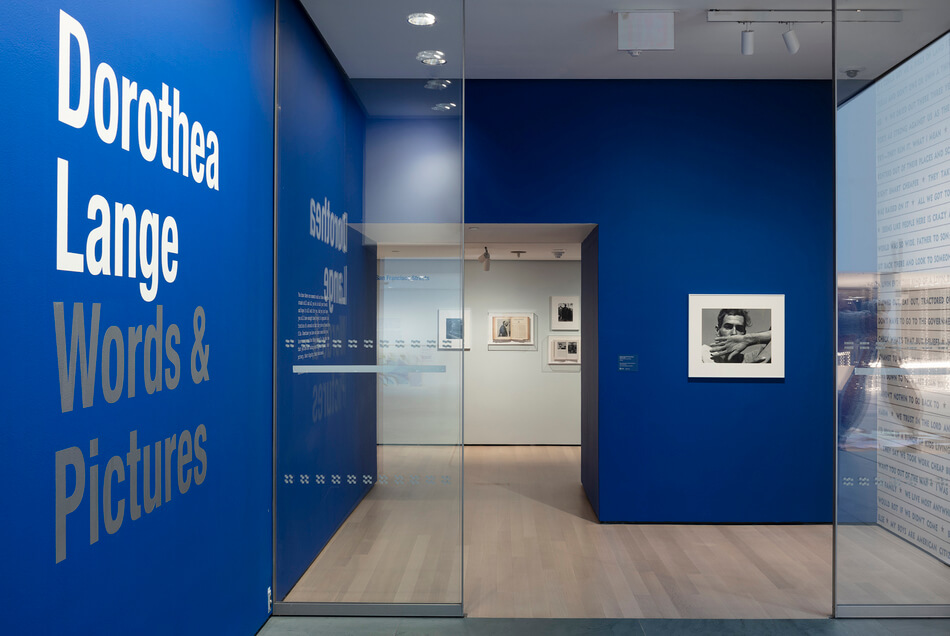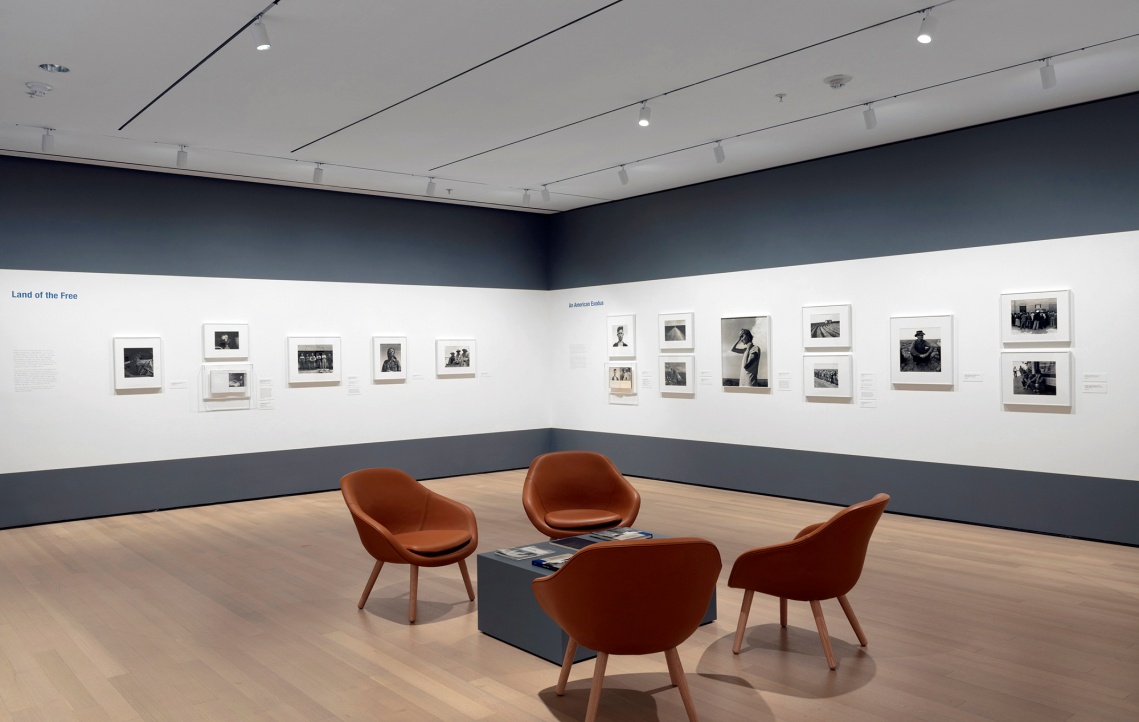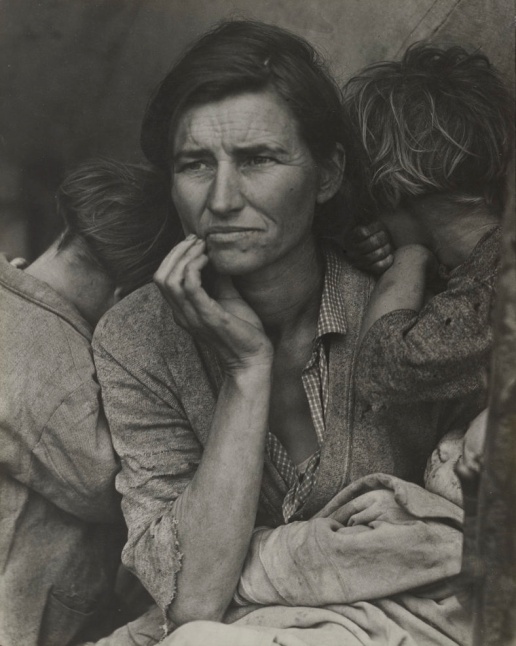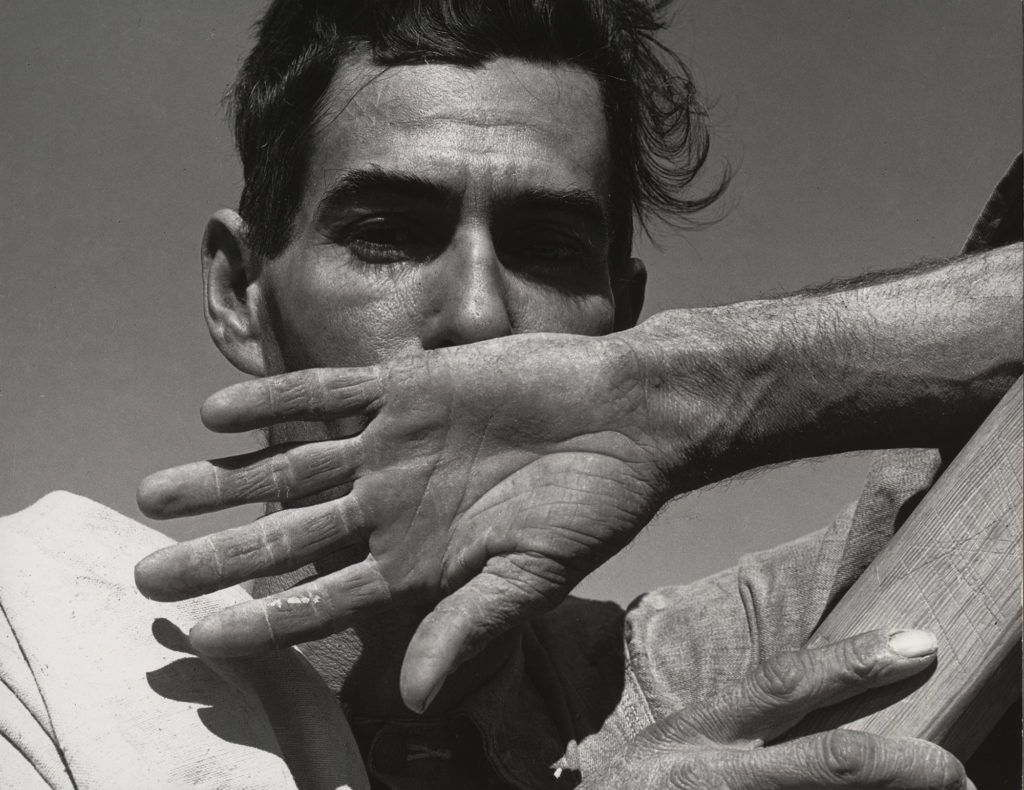Dorothea Lange is deemed one of America’s best photographers for her striking portraits of common people during the Great Depression and acute social awareness. However, not many know that she was also fascinated by the power that words hold. Lange felt that words were capable of adding necessary context to photographs, that way making their social impact more profound. The Museum of Modern Art reports that she once said: “All photographs – not only those that are so called ‘documentary’… can be fortified by words.” Lange is even considered to be one of the first photographers to include the photo subjects’ words into the captions, which is evidenced by her seminal work An American Exodus: A Record of Human Erosion. MoMA’s 2020 exhibition provides an insight into the photographer’s artistry by featuring her most-known works alongside the lesser-known ones and equips them with context. Its online version, remaining available today, gives one a unique opportunity to not only study Lange’s photographs but read selections of her writings, watch videos on her works, and listen to curator Sarah Meister’s interview.
The ‘installation images’ section on the bottom of the main page of the website demonstrates how the exhibition’s space was organized. As can be seen in Appendix A, deep blue walls contrast with the adjacent white ones, and the way pictures and words are situated on them draws attention by the clarity of the lines. However, for the exhibition featuring ‘words’ in its name, there are surprisingly few instances of captions beside photographs, as shown by Appendix B – especially considering how Lange deemed them integral to her art. On the other hand, one might feel that many of the photographs do not need to be accompanied by texts for they speak for themselves. It seems that just scrutinizing the faces of the subjects of Lange’s photographs is enough to understand what they have been through. A vast calm exhibition space allows a substantial number of people to do it simultaneously without distracting one another from the valuable experience.
Appendixes
Appendix A

Appendix B

In terms of the works that amaze the most, it is impossible not to mention Migrant Mother, Appendix C – a picture that symbolizes the Great Depression era. Markus notes that it is the subject’s hand in the immediate vicinity of her face that gives the image its expressiveness. In her piece on the photograph, Meister reports that Migrant Mother, Florence Thompson, is actually of Cherokee descent, which was unknown in Lange’s lifetime, and which could have influenced the work’s legacy. The photographer herself got to tell the picture’s story almost three decades after it was taken – and it is fascinating. Meister cites Lange recalling how she was drawn to Thompson, hungry and desperate, as if by a magnet. Lange asked the woman neither her name nor history, only the age; Thompson said she was 32. With her family, they had been living on damaged vegetables and birds killed by children; she had to sell car tires to buy food. This story, being the norm for those times, horrifies now and almost makes the photograph even more overpowering.
Appendix C

There is another work that might be not as distinguished as Migrant Mother, but it impresses just as much. Migratory Cotton Picker, hanging near the exhibition’s entrance, welcomes visitors and draws their attention, immediately demonstrating Lange’s genius to those unaware of it. Seen in Appendix D, it is the image of a cotton picker who hides the lower part of his face from a viewer by his calloused palm, as if signaling his restraint. In her field notes, Lange wrote that this particular man was resting at cotton wagon before coming back to work; he had been picking cotton all day, for which he received about two dollars. Lange liked to talk to people, listen to their stories, and then go back to her car, and write down these precious snippets to capture the texture of these people’s lives. She granted the voice to a common American man and immortalized it, without him even knowing it.
Appendix D

Even though some might have initially thought that there was nothing more to discover about the artistry of one of America’s finest photojournalists, this exhibition proves them wrong. Wall texts and captions, even if there are not as many, enrich the photographs with context: Lange’s own comments and quotes from her images’ subjects give a viewer additional food for thought. This approach allowed the exhibition’s creators to shake public to the core: while the photographs impress on an artistic level, the words shed light on the hardships that the photographs’ central figures had to overcome. It reminds that art is a prism through which one sees life; in Dorothea Lange’s case, life of those less fortunate than she was. The photographer was committed to bringing attention to the tragedy of the Great Depression and ensuring no one forgets about it – and that alone made the organization of this exhibition worthwhile.
References
“Dorothea Lange: Words & Pictures.” The Museum of Modern Art. Last modified 2020. Web.
Markus, David. “Dorothea Lange’s Photography Captured the Despair of a Country Divided by Inequality.” Art News, Web.
Meister, Sarah. “Piecing Together Dorothea Lange’s Migrant Mother.” The Museum of Modern Art, Web.